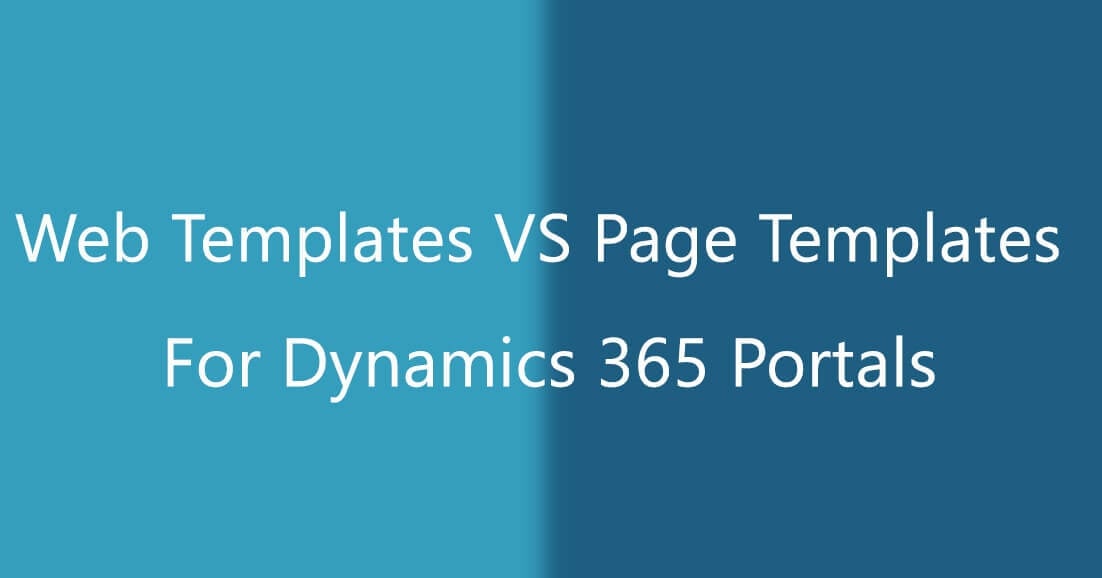We get frequently asked about the difference between portal entities in Dynamics 365. It’s understandable as they are named quite similarly. In this post, we’re going to explain the differences between web page, web templates and page templates.
Web Page
Web pages represent a URL in the portal and is a core entity in the content management system. They sit within their own hierarchy and can have parent and child pages such as a Home > Product page. They are also the basis of other portal entities such as blogs, forum, shortcuts and web files.
When you are creating a web page, you must attach a page template which retrieves a selected web template. This will allow you to keep your layout and design consistent across your portal.
Managing your web pages in Dynamics 365 Portal
There are two ways to create and manage your pages. Personally, I prefer to do this through the Portal by:
1. Signing in the Portal.
2. Navigate to the page that will be the parent of your new web page.
3. On the right-hand side, you should see the editing toolbar. Click New > Child page.
4. Enter your values such as your chosen URL, title, content, CSS and JS.
5. Click Save.
To manage pages through the Portal in Dynamics 365
1. Sign in to Dynamics 365.
2. Navigate to Portals > Web pages.
3. Click New.
4. Enter your values in the fields and click Save.
Page Templates
A Page template is a record that acts as a pointer to web template. Page templates can hold multiple pages that access the web templates. This allows multiple page templates to access the same web template, with some field changes such as including the header and footer. The image below should help clarify the Dynamics 365 Portal structure.

To create a new template you must sign in to Dynamics 365 then:
1. Navigate to Portals > Page Templates.
2. Click New in the top toolbar.
3. Fill in the appropriate fields and select pages you want to be attached.
Web Templates
Web templates are the top tier content records in Dynamics 365 Portal. They can handle your selected HTML, CSS, JS and Liquid code. Once you have saved your web template, it will process your code and output its contents across each of your web pages which are pointed towards the template.
Liquid is used to retrieve dynamic code from within the CRM database using selected tags. It’s an open source template engine which was originally made by Shopify. You can find out more about this at:
For best practice, we advise you to keep CSS contained within the correct stylesheets to prevent conflicts. We also advise you to keep secure backups of your templates off the cloud in case of data loss or errors.

Daniel Norris
Communications Manager
Daniel Norris is the communications manager for The Portal Company. His role is to bring you the latest updates, tips, news and guides on Dynamics 365 Portal. If you have any questions, please get in touch with us.
